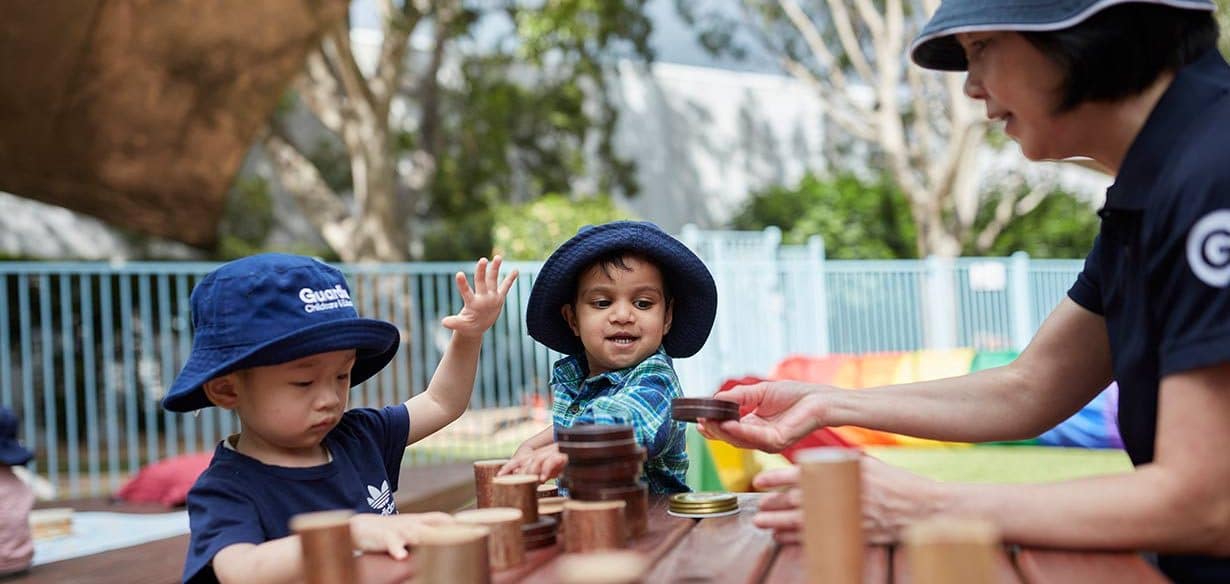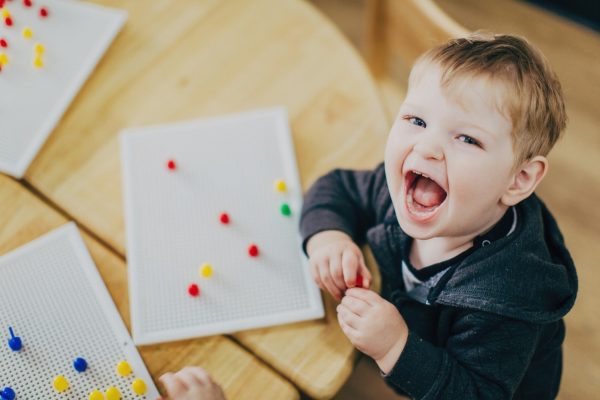Child Behaviour Guide: Pinching, Biting & Hair Pulling

Seeing a young child, bite, pinch, or pull another child’s hair can certainly be confronting. Many families worry that this kind of behaviour could indicate aggressive traits in other issues with a child. We can reassure you that aggressive behaviour in young children is part of their development and dealing with it all comes down to understanding what’s driving the behaviour. We want to help you understand why they do it, and how to manage it.
This is your guide to understanding and managing early aggressive behaviour in childcare–aged children. This article deals with issues around biting, pinching, hair-pulling and other aggressive behaviours in young children and toddlers.
Biting
Biting is an issue we often manage in our centres, and something many families ask us for advice on from time to time. Firstly, biting does not mean your child is ‘naughty’ or ‘bad’ or that you have somehow failed as a role model! It’s a completely normal developmental stage once you understand why it happens and how to deal with it.
Biting is generally seen in groups of children aged between one and three. At this age children are exploring the world through their senses (taste, smell, sight and touch), but aren’t necessarily able to communicate what they want.
That’s why from the age of three or so, biting tends to reduce or disappear as your child has discovered other ways to communicate their needs and wants – speech and social and emotional skills such as taking turns and empathy.
Dealing with biting all comes down to understanding what’s driving the behaviour. Then you can put strategies in place.
- Frustration. If your child can’t yet talk or communicate effectively, encouraging language and non-verbal communication can help.
- Self-defense from a sibling or other child. You should look at the situation and ensure it is being managed by separating the children in the first instance.
- Teething. It’s common for children to want to chew on items (including other children!) when they are teething. Providing an appropriate teething aid can help if biting is a result of new teeth coming through.
- Developing self-control. Children in this age group can be impulsive and often can’t stop themselves from doing something, so redirection to a more appropriate activity can help them develop a little more self control.
- Wanting attention. Ensure your child has one-on-one time on a regular basis to fill their attention cup as they may be biting in order to get a reaction (attention) from their caregiver.
What to do about it?
Depending on your child’s age, there are a few options on how to manage the situation.
- For babies: Give a clear verbal indication that the behaviour is not okay – say ‘no’. Then gently remove your child’s mouth and turn away or put him or her down. When your child shows positive behaviour respond with lots of attention and praise so they understand biting will not result in attention.
- For toddlers: Again, a clear verbal response works well to gain your child’s attention so they know the behaviour is not acceptable. Stay calm and redirect his or her attention to another activity. The key is consistency, and your toddler will soon learn that biting does not mean more attention from their caregiver.
The best thing to do after an incident of biting, pinching or hair-pulling is to help your child ‘move on’. Redirect them to a relaxing activity like bubble blowing, playing with playdough, or allow them to quietly draw or sit with a book. This will help them calm down and relax.
For more information on biting behaviour, and how to support your child to stop, visit the Raising Children website.

Pinching and hair pulling
As with biting behaviour, pinching and hair pulling in children may be exhibited for various reasons including medical, sensory or communication issues. Determining the trigger is often the best way of knowing how to help the children learn alternative means of response.
Young children do not usually have the communication skills required to express big emotions like frustration or anger. These emotions can come about for a range of reasons – anything from a change in routine, illness, or being separated from their primary caregiver.
In the case of hair pulling, it can also be related to a baby gaining confidence and grabbing skills. They are merely practicing how to use their hands! In toddlers, it is more commonly related to seeking attention, or if they feel overwhelmed by their surroundings.
The key thing to understand when your child lashes out with this kind of behaviour is that they’re not being deliberately nasty, but rather struggling to regulate their emotions as they attempt to communicate their needs.
Strategies to help your child when they pinch or pull hair
- Work hard to understand your child and look for the early signs of frustration. The best strategy is to try and avoid the behaviour in the first place by being on the lookout for those early signs of frustration which will be unique to your child, but might include them appearing agitated, fussy or making irritable sounds.
- Stay calm. You cannot deal with a frustrated child if you’re frustrated yourself. Take deep breaths, speak to your child in a low calm voice and then redirect their attention to a calm activity such as playing with playdough or drawing.
- Develop a calm area where your child can sit and self-regulate. Include calming resources like bean bags, books or blocks. And ensure the space is cosy, low on light and safe.
- Depending on their age, you can help your child communicate their feelings after they have calmed down. Talk to them and try and understand why they got frustrated in the first place.
For more information on pinching behaviour, and how to support your child to stop, visit the Playgroup NSW website.
Other aggressive behaviour in children
Understanding aggressive behaviour in children is about knowing what’s developmentally appropriate and what’s not. Again, physical or verbal aggression in children under school age is usually related to frustration – normally around not being able to communicate and express themselves effectively.
We all have trouble controlling our frustration sometimes, and it’s even harder for young children who do not have the language or social skills yet to communicate effectively or regulate those emotions. Like most things with small children, it consistency and effective role modelling – as well as taking the time and making the effort to understand what’s driving the behaviour. If your preschooler is exhibiting aggressive behaviour, try not to worry – it is a normal developmental stage. But, by the time your child is old enough to communicate effectively (around age seven), this aggressive behaviour should drop off. If it doesn’t, you could seek out some professional help on the topic.
How you can help your child when they become aggressive
- Stay calm. Meeting big emotions with more big emotions will not help calm the situation. Make sure you role model appropriate responses, and with consistency and repetition of this, your child will be led by you.
- Don’t give in to tantrums. This will simply reward the behaviour you’re trying to discourage.
- Praise your child for behaving well Reward good behavior, even when your child isn’t doing anything out of the ordinary. Recognition and praise are more powerful than trets or rewards – so the next time you see your child playing nicely with their sibling, or bahving well at the breakfast table, make sure you say something and praise their efforts.
- Name the emotions. You could say, “I can tell you’re feeling really angry.” This validates your child’s experience and encourages verbal expression.
- Know your child. What are their patterns and triggers? If your child is usually tired and agitated after a day at childcare, try to keep the house calm at that time to avoid any meltdowns.
We hope this article will help you navigate some of the trickier behaviours we see in younger children. The main thing to remember is to stay calm and be a positive role model. You are a safe space for your child when they are experiencing these overwhelming emotions.
Looking for the right Childcare Centre for your Family?
Submit your details and a member of our Concierge Team will be in touch to discuss what you need and how we can help you experience something more than childcare.
We'll be in touch soon.






